#fabricmanipulation
Photo

1892-95 dress. "The dress is a pinafore style, worn over a matching chocolate-brown silk satin bodice with a high braided gilt collar. The body and upper part of the leg o'mutton sleeves in knife-pleated silk satin with the lower part of the sleeves close-fitting ribbed wool with braiding. Velvet band at the wrist of the sleeves. The sleeves fastens at the wrists with an embroidered brown button with a worked loop." Victoria and Albert Museum accession number T.31&A-1987 . . . . . . #HistoricalGarments #HistoricalCostume #1890s #DressHistory #Historia #HistoricalCostuming #FashionHistory #HistoriaDeLaModa #CostumeDesign #BelleEpoque #Costura #PinaforeDress #FabricManipulation #HistoireDeLaMode https://www.instagram.com/p/CjZLIlhpjV6/?igshid=NGJjMDIxMWI=
#historicalgarments#historicalcostume#1890s#dresshistory#historia#historicalcostuming#fashionhistory#historiadelamoda#costumedesign#belleepoque#costura#pinaforedress#fabricmanipulation#histoiredelamode
570 notes
·
View notes
Photo

Progress shot of a wrinkly chin. I think I am pretty much done on the jowls now too, so I'll be looking at the body next. Feels like a mountain ahead of me! #wrinkly #wrinklychin #wrinklydogs #jowls #wrinklychops #fabricmanipulation #fabricfolds #textiledesign #surfacedetail #surfacedesign #texture #textural #ripples #animalportrait #dogportrait #freehand #handsewn #wipart #workinprogress #ontothenextchallenge https://www.instagram.com/p/ChMrD2gIIpG/?igshid=NGJjMDIxMWI=
#wrinkly#wrinklychin#wrinklydogs#jowls#wrinklychops#fabricmanipulation#fabricfolds#textiledesign#surfacedetail#surfacedesign#texture#textural#ripples#animalportrait#dogportrait#freehand#handsewn#wipart#workinprogress#ontothenextchallenge
2 notes
·
View notes
Text
TYPES OF SURFACE DESIGN IN 2024 WORLD

Surface design refers to the application of decorative elements to the surface of a material, enhancing its visual appeal and texture. There are various types of surface design techniques, each with its unique methods and applications. Here are some common types of surface design:
Write FAQs Based On Surface Design
Textile Surface Design:
- Printing: Techniques such as screen printing, block printing, digital printing, and heat transfer can be used to apply patterns and designs onto fabrics.
- Dyeing: Various dyeing methods, including tie-dye, batik, shibori, and dip-dyeing, can be employed to add color and patterns to textiles.
- Embroidery: This involves embellishing fabric surfaces with stitched designs using threads, beads, or other materials.
Graphic Design:
- Digital Graphics: Computer-aided design (CAD) software is used to create digital graphics for surfaces, such as wallpapers, digital prints on textiles, and other decorative applications.
- Decals and Transfers: Applying pre-designed decals or transfers onto surfaces, including ceramics, glass, and metals.
Wall Surface Design:
- Wallpaper: Traditional or digital wallpapers come in various patterns, textures, and colors to enhance the aesthetic appeal of walls.
- Wall Murals: Large-scale, hand-painted or digitally printed murals can transform a wall into a work of art.
- Ceramic Surface Design:
- Glazing: The application of glazes to ceramics before firing, with techniques like dipping, brushing, and spraying, to achieve different surface finishes.
- Sgraffito: Scratching through layers of slip or glaze to reveal contrasting colors or the underlying surface.
Wood Surface Design:
- Wood Carving: Intricate designs can be carved into wood surfaces, creating texture and patterns.
- Inlay and Marquetry: Adding decorative elements by embedding contrasting materials into the surface of the wood.
Metal Surface Design:
- Etching: Using chemicals or tools to create patterns or designs on the surface of metal.
- Patination: Treating metal surfaces with chemicals to induce color changes or textures.
- Paper Surface Design:
- Paper Cutting: Intricate designs are cut into paper to create patterns or images.
- Collage: Layering different paper elements to create visually interesting compositions.
- Concrete Surface Design:
- Stamped Concrete: Patterns are stamped onto freshly poured concrete to create textures and designs.
- Staining: Applying color stains to concrete surfaces to achieve different hues and effects.
- Leather Surface Design:
- Embossing: Creating raised patterns or designs on leather by pressing or stamping.
- Tooling: Using specialized tools to carve intricate designs into the surface of leather.
- Glass Surface Design:
- Etching: Similar to metal etching, chemicals or abrasive techniques are used to create frosted or patterned designs on glass surfaces.
- Fused Glass: Layering and fusing different pieces of colored glass to create unique patterns and textures.
- Plastic Surface Design:
- Molding: Creating textured or patterned surfaces during the molding process for plastic products.
- Film Application: Applying decorative films or laminates to plastic surfaces for added visual appeal.
- Floor Surface Design:
- Floor Inlays: Integrating different materials, such as wood or tile, into flooring to create decorative patterns.
- Stenciling: Applying paint or other materials through stencils to create patterns on floors.
- Digital Surface Design:
- Generative Design: Using algorithms and computer programs to create intricate and often complex designs.
- Augmented Reality (AR) Surfaces: Interactive digital elements overlaid on physical surfaces, often used for immersive experiences.
- Stone Surface Design:
- Engraving: Carving designs or patterns into stone surfaces using tools or abrasive techniques.
- Polishing: Enhancing the natural patterns and colors of stones through polishing processes.
- Mixed Media Surface Design:
- Combining multiple materials: Using a combination of materials like fabric, paper, metal, and others to create eclectic and textured surfaces.
- Assemblage: Creating surfaces by assembling various objects and materials into a cohesive design.
- Bio-Fabrication Surface Design:
- Living Surfaces: Incorporating living organisms like moss or algae into design elements for sustainable and eco-friendly surface treatments.
- Biodegradable Materials: Using materials that decompose naturally over time, contributing to environmental sustainability.
- Digital Fabrication and 3D Printing:
- Additive Manufacturing: Creating intricate surface designs layer by layer using 3D printing or other digital fabrication techniques.
- Parametric Design: Utilizing algorithms to generate designs with variable parameters, resulting in complex and customizable surface patterns.
- Concrete Stenciling:
- Using stencils to apply patterns, images, or textures onto concrete surfaces, often seen in outdoor spaces like patios and sidewalks.
- Digital Embroidery:
- Employing computerized embroidery machines to create intricate and detailed designs on fabric, allowing for precise and complex patterns.
- Laser Cutting:
- Using laser technology to cut or engrave intricate patterns onto various materials such as wood, acrylic, fabric, and leather.
- Bamboo Surface Design:
- Utilizing the natural characteristics of bamboo, such as its grain and texture, to create decorative patterns through methods like burning, carving, or staining.
- Metal Leafing:
- Applying thin sheets of metal (such as gold leaf or silver leaf) onto surfaces for a luxurious and reflective finish.
- Digital Projection Mapping:
- Projecting dynamic digital images onto surfaces to create immersive and interactive experiences, often used in art installations and events.
- Tyvek Art:
- Exploring surface design using Tyvek, a synthetic material known for its durability, through techniques like folding, cutting, and heat manipulation.
- Sandblasting:
- Using abrasive materials propelled at high speed to etch or texture surfaces, commonly applied to glass, stone, or metal.
- Tape Art:
- Creating intricate designs by applying colored tapes directly onto surfaces, allowing for temporary and dynamic visual enhancements.
- Hydro Dipping (Water Transfer Printing):
- Submerging objects into a water bath with a floating layer of printed designs, enabling the transfer of the design onto the surface of the object.
- Resin Art:
- Using epoxy resin to create glossy and three-dimensional surfaces with embedded pigments, objects, or textures.
- Natural Surface Design:
- Incorporating elements from nature, such as leaves, flowers, or bark, directly onto surfaces through techniques like eco-printing or botanical printing.
- Digital Wallcoverings:
- Customizing and printing large-scale wallcoverings digitally, allowing for intricate patterns, high-resolution images, and unique designs.
- Bio-Mimicry Surface Design:
- Drawing inspiration from nature to create designs that imitate natural patterns, textures, or organic structures.
- Smart Surfaces:
- Integrating technology into surfaces to create "smart" features, such as responsive lighting, interactive displays, or surfaces that change color or texture based on external stimuli.
- Flocking:
- Applying small fiber particles (flock) to adhesive-coated surfaces, creating a velvety or textured finish. This technique is often used on fabrics, paper, or even plastic.
- Concrete Acid Staining:
- Using acid-based chemicals to react with the minerals in concrete, resulting in unique and variegated colors on the surface.
- CNC Routing:
- Employing computer numerical control (CNC) machines to precisely cut, carve, or engrave intricate patterns into various materials like wood, plastic, or metal.
- Kinetic Surfaces:
- Designing surfaces that can move or change dynamically, creating kinetic art installations or functional elements with changing patterns.
- Photomontage and Collage:
- Creating visual compositions by combining photographs or cutouts from various sources to form a cohesive design on surfaces like paper or canvas.
- Carbon Fiber Weaving:
- Utilizing the weaving technique with carbon fiber materials to create lightweight and strong surfaces, often used in high-performance applications.
- Cork Surface Design:
- Using cork as a material for surface treatments, which can include printing, staining, or shaping to enhance its natural characteristics.
- UV Printing:
- Employing ultraviolet (UV) light to cure or dry inks on surfaces quickly, allowing for vibrant and durable prints on various materials.
- Marbling:
- Floating and manipulating pigments on the surface of a liquid bath before transferring the design onto paper, fabric, or other materials.
- Smoke Firing (Raku Pottery):
- Exposing pottery to smoke during the firing process, creating unique and unpredictable surface patterns through the interaction of smoke and clay.
- Capiz Shell Inlay:
- Incorporating thin, translucent shells from the windowpane oyster (Capiz) into surfaces, often used in decorative items and furniture.
- Spray Painting:
- Applying paint using aerosol spray cans, allowing for a quick and even distribution of color on surfaces like walls, canvases, or objects.
- String Art:
- Creating geometric or abstract designs by arranging and affixing threads or strings to a surface, often in conjunction with nails or pins.
- Magnetic Surfaces:
- Integrating magnetic materials into surfaces, allowing for the attachment of magnetic elements or interactive features.
- Solar Printing:
- Using sunlight to create photographic prints on surfaces coated with light-sensitive materials, often resulting in cyanotype or sun print designs.
- Thermal Printing:
- Applying heat to special paper or materials to produce images or patterns, commonly used in receipt printers and certain art applications.
- Velvet Finishes:
- Achieving a soft and plush texture on surfaces through techniques like velvet flocking, fabric application, or specialized finishes.
- Mirror Mosaics:
- Creating intricate patterns by arranging small mirror pieces to form a mosaic on surfaces, adding reflective and dynamic qualities.
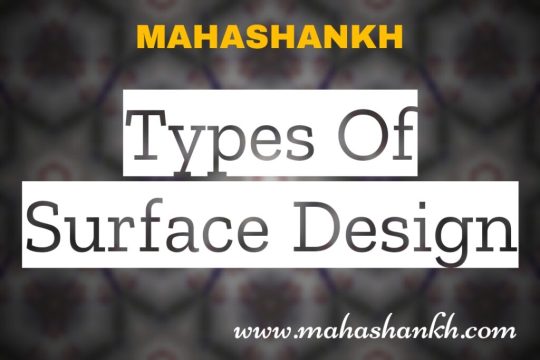
TYPES OF SURFACE DESIGN
Write FAQs Based On Surface Design
What is surface design?Surface design involves enhancing the appearance and texture of various materials through decorative techniques and artistic applications.What are some common materials used in surface design?Common materials include textiles, paper, wood, metal, glass, ceramics, concrete, plastic, and more.How is digital surface design different from traditional methods?Digital surface design involves using computer-aided tools and technologies, while traditional methods rely on manual techniques like printing, painting, and carving.Can surface design be applied to 3D objects?Yes, surface design can be applied to 3D objects through techniques like painting, carving, and various coatings.What is the significance of texture in surface design?Texture adds tactile and visual interest to surfaces, creating a unique and dynamic user experience.How does one get started with textile surface design?Getting started involves learning techniques like printing, dyeing, and embroidery, often through courses, workshops, or self-study.What is the difference between surface design and interior design?Surface design focuses on enhancing the appearance of materials, while interior design encompasses overall spatial planning and aesthetics.Can surface design be applied to outdoor spaces?Yes, surface design can be applied outdoors through techniques like concrete stenciling, murals, and landscaping.What is the role of color theory in surface design?Color theory guides the selection and combination of colors, influencing the visual impact and emotional response to surface designs.Are there sustainable surface design practices?Yes, sustainable practices include using eco-friendly materials, minimizing waste, and considering the life cycle of products.What is the difference between patination and oxidation in metal surface design?Patination is a controlled process to achieve specific colors, while oxidation refers to the natural corrosion of metal over time.Can surface design be applied to digital interfaces?
Yes, digital surface design is relevant in creating user interfaces, websites, and applications, focusing on visual elements and user experience.How is bio-mimicry used in surface design?Bio-mimicry involves imitating natural patterns and forms, bringing elements from nature into surface design for aesthetic and functional purposes.What tools are commonly used in wood surface design?Tools include carving tools, sandpaper, stains, and finishes for techniques like carving, inlay, and wood burning.What is the purpose of surface design in packaging?Surface design on packaging enhances product visibility, communicates brand identity, and attracts consumer attention.Can surface design be used for creating custom wallpapers?Yes, surface design plays a crucial role in creating unique and customized wallpapers with various patterns and textures.How does one create a seamless pattern in surface design?Seamless patterns are created by ensuring that the edges of the design align seamlessly when repeated, often using digital tools.What is the role of lighting in showcasing surface design?Lighting enhances the visibility and appreciation of surface design details, emphasizing textures, colors, and patterns.Is 3D printing used in surface design?Yes, 3D printing can be employed to create intricate and three-dimensional surface designs on various materials.What are the different types of embroidery stitches used in textile surface design?Common stitches include satin stitch, chain stitch, and French knots, each contributing to different textures and patterns.How can surfaces be designed for acoustics in interior spaces?Materials with specific textures and compositions can be chosen to absorb or diffuse sound, contributing to better acoustics.What is the role of CNC routing in surface design?CNC routing enables precise cutting and carving of intricate patterns on materials like wood, plastic, and metal.Can surface design impact a brand's identity?Yes, surface design on products, packaging, and marketing materials can significantly influence and reinforce a brand's identity.What is the significance of negative space in surface design?Negative space, or empty areas, is essential for creating balance and visual interest in surface designs.How does one create a distressed or aged look in surface design?Techniques such as sanding, distressing, and applying specific finishes can give surfaces an aged or weathered appearance.Can surface design be temporary or removable?Yes, techniques like decals, removable wallpapers, and temporary coatings allow for surface designs that can be changed or removed easily.What role does psychology play in color selection for surface design?Colors can evoke specific emotions and responses, making color psychology crucial in selecting hues for surface designs.How can one protect surface designs from wear and tear?Protective coatings, sealants, and proper maintenance help preserve surface designs and extend their lifespan.What is the difference between hand-painted and digitally printed surface designs?Hand-painted designs involve manual application, while digital printing allows for precise and replicable designs using technology.Can surface design be used in landscape architecture?Yes, surface design principles are applied in landscaping through features like patterned pavements, murals, and artistic installations.What is the role of cultural influences in surface design?Cultural influences impact design aesthetics, motifs, and color choices, adding richness and diversity to surface design.Can surface design be used to create tactile maps for the visually impaired?Yes, tactile maps with raised surfaces and textures can be designed to provide spatial information for the visually impaired.How does one create a harmonious color palette in surface design?Harmonious color palettes are achieved by selecting colors that complement each other, often using color wheels and schemes as guides.Is surface design used in automotive interiors?
Yes, surface design is applied in automotive interiors through materials, textures, and finishes to enhance the overall aesthetic.What is the difference between matte and glossy finishes in surface design?
Matte finishes have a non-reflective surface, while glossy finishes are reflective, creating different visual effects and tactile sensations.How does one incorporate lighting effects in surface design?
Integrated lighting, backlighting, and reflective materials can be used to create dynamic and visually striking effects on surfaces.Can surface design be used in product prototyping?Yes, surface design is often incorporated into product prototypes to visualize and refine the final appearance.
Read the full article
#Abstractsurfacedesign#Colorexploration#Contemporarypatterns#Digitalsurfacedesign#Fabricmanipulation#Floralmotifs#GeometricPatterns#Hand-drawnmotifs#Mixedmediasurfaces#Organictextures#Patterncreation#Patterndesigninspiration#Printmaking#Repeatpatterntechniques#Repeatpatterns#Surfacepatternillustration#Sustainablesurfacedesign#Textileart#Textilesurfacedesign#urfacedesign#Vintagesurfacedesign
0 notes
Photo
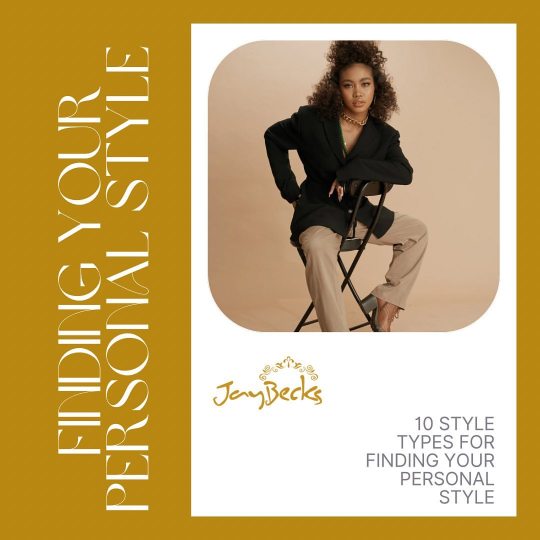
Do you have a personal Style ? Style is something you learn. Nobody is born stylish (no matter how it seems on Social Media platform. and is something you discover, practice, and integrate into your life every single day. You can be stylish - and believing that is the key to unlocking your personal style. you can have great personal style no matter your body size, shape, or your style. Personal style can feel good.🙂 Now slide to read … it’s insightful and also addresses best fabrics for each style 😉 And trust #jaybecks to have these luxury fabrics to help you create “your look “ Please comment your personal style below if you know your style . - - - - - - - - - - - - - - - - - - - - - #fashion #fashionblogger #fashionstyle #fashiondesigner #fashionlover #fashionmodel #nigerianfashion #nigerianfashiondesigner #nigerianfashionblogger #nigerianfashiondaily #lagosfashion #abujafabrics #lagosfabrics #lagosnigeria #fashionnigeria #nigerianfashionindustry #fabricmanipulation #fabricsinlekki #fabricinwuse #abujafabricstore #lagosfabrics #lagos #nigeria (at Abuja, Nigeria) https://www.instagram.com/p/Cm80BsFS9iM/?igshid=NGJjMDIxMWI=
#jaybecks#fashion#fashionblogger#fashionstyle#fashiondesigner#fashionlover#fashionmodel#nigerianfashion#nigerianfashiondesigner#nigerianfashionblogger#nigerianfashiondaily#lagosfashion#abujafabrics#lagosfabrics#lagosnigeria#fashionnigeria#nigerianfashionindustry#fabricmanipulation#fabricsinlekki#fabricinwuse#abujafabricstore#lagos#nigeria
0 notes
Photo

P R O C E S S During the development process of the wet illusion dress. Cut out of silk velvet the dress is pleated in a way to mimic the folds of a cloth when wet against the body. Fresh water pearls adorn this piece, evoking the sense of a goddess emerging from the water with pearls clinging to her dress 🌊 . . . . . . . . . . #wetdress #pleating #fabricmanipulation #hautecouture #couture #couturedress #silkdress #fashionprocess #couturesewing (at Sydney, Australia) https://www.instagram.com/p/CmbFvYcvqYp/?igshid=NGJjMDIxMWI=
#wetdress#pleating#fabricmanipulation#hautecouture#couture#couturedress#silkdress#fashionprocess#couturesewing
0 notes
Photo

Using the princess pleater with elastic thread and linen fabric #fashion #fashiondesign #knitwear #knitweardesigner #knitwearfashion #patterncutting #garmentconstruction #fabricmanipulation #designer #fashiondesigner #clothes #wool #textiles #woventextiles #lsad (at Limerick School of Art & Design TUS) https://www.instagram.com/p/CioEFZWti_J/?igshid=NGJjMDIxMWI=
#fashion#fashiondesign#knitwear#knitweardesigner#knitwearfashion#patterncutting#garmentconstruction#fabricmanipulation#designer#fashiondesigner#clothes#wool#textiles#woventextiles#lsad
0 notes
Photo
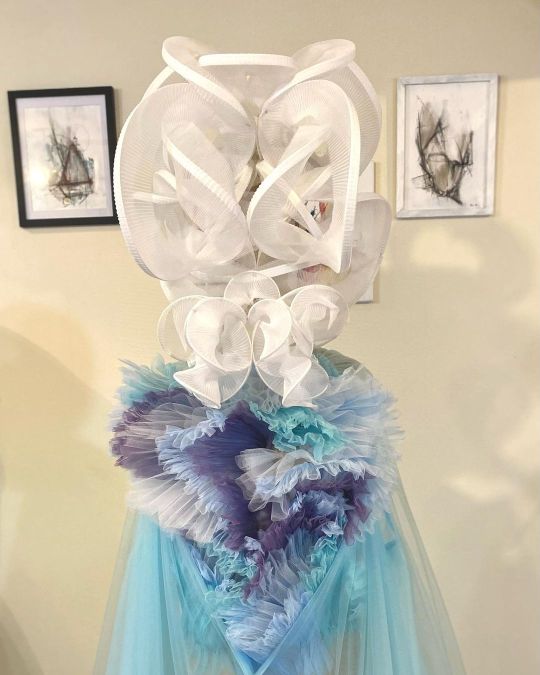
「OTONANO-ASOBI」 #おとなのあそび -costume making/trial work- The custum-made costume would be constrcted with the pleated parts by free hands (including aqua blue/violet/white color) #ARAKISHIRO #emergingdesigner #upnextdesigner #thevanillaissue #fashionforbankrobbers #emergingfashion #conceptualfashion #3dfashion #upcomingdesigner #costumemaking #garmentconstruction #fabricmanipulation #sculptural https://www.instagram.com/p/Cgynjz8BOe9/?igshid=NGJjMDIxMWI=
#おとなのあそび#arakishiro#emergingdesigner#upnextdesigner#thevanillaissue#fashionforbankrobbers#emergingfashion#conceptualfashion#3dfashion#upcomingdesigner#costumemaking#garmentconstruction#fabricmanipulation#sculptural
0 notes
Photo

Bridal couture using fabric manipulation and beading #bridal #bridalbeading #fabricmanipulation #allurexports #wearepremierevision #crystals #swarovski #silkfabric #couture #couturefashion #premierevision #premierevisionparis #fashionstyle #bridalcouture #bridalstyle #designergowns #exports #madeinindia #embellishment #exporthouse #ricamo #sequinsembroidery (at Allure Exports Pvt. Ltd.) https://www.instagram.com/p/CegiAmyPIBg/?igshid=NGJjMDIxMWI=
#bridal#bridalbeading#fabricmanipulation#allurexports#wearepremierevision#crystals#swarovski#silkfabric#couture#couturefashion#premierevision#premierevisionparis#fashionstyle#bridalcouture#bridalstyle#designergowns#exports#madeinindia#embellishment#exporthouse#ricamo#sequinsembroidery
0 notes
Text
Fabric Manipulation Techniques
Fabric Manipulation Techniques
#Fabricmanipulation #textilemanipulation #fashiondesign #embroidery
Fabric Manipulation Techniques
Shubham Anil Jain
Aditya Birla Fashion and Retail Limited
Bangalore, India
Email: [email protected]
Introduction:
Fabric manipulation is also called as textile manipulations and is defined as playing with the fabric to change its appearance, drape or shape. Normally, aim is that, the fabric to become more dimensional, to go from flat to 3D. In another word…
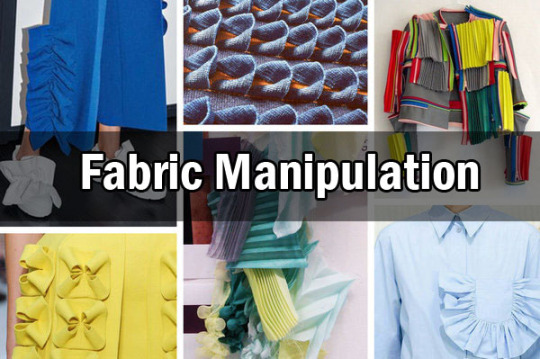
View On WordPress
1 note
·
View note
Photo
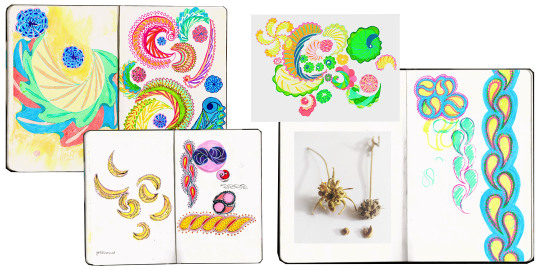
thinking of paisley
#doodle#drawing#paisley#flowerseed#flower seeds#seeds#marigold#floral motif#print#patterndesign#textielart#textileart#textileartist#fabricmanipulation#alloverdesign#graphic design#graphics#yinyang#floral#flower#surfacedesign
2 notes
·
View notes
Photo

Bête Noire sketchbook page. . . . #fabricmanipulation #leathermanipulation #leatherstraps #leatherbraid #silvertrim #blackleather #journalpage #designprocess #fashiondesignsketchbook #fashiondesign #fashionmoodboard #dark #spooky (at New York City U.S.A.) https://www.instagram.com/p/CVlIejMPyx4/?utm_medium=tumblr
#fabricmanipulation#leathermanipulation#leatherstraps#leatherbraid#silvertrim#blackleather#journalpage#designprocess#fashiondesignsketchbook#fashiondesign#fashionmoodboard#dark#spooky
2 notes
·
View notes
Photo

1818 Silk Muslin evening dress. Lace, silk taffeta, and silk braid trim around the neckline. Gauze overlay used for the flounce of the skirt and the epaulettes on the sleeves. Museum of Applied Arts & Sciences, number A8217 . . . . . . #HistoricalGarments #HistoricalCostume #19thCenturyFashion #DressHistory #Historia #HistoricalCostuming #SilkDress #FashionHistory #HistoriaDeLaModa #CostumeDesign #Costura #Regency #FabricManipulation #HistoireDeLaMode https://www.instagram.com/p/Cj1p92bLOiH/?igshid=NGJjMDIxMWI=
#historicalgarments#historicalcostume#19thcenturyfashion#dresshistory#historia#historicalcostuming#silkdress#fashionhistory#historiadelamoda#costumedesign#costura#regency#fabricmanipulation#histoiredelamode
282 notes
·
View notes
Photo

Eye lid ripple experiments. Not sure I've got the right combination just yet... I'll keep fiddling #sadeyes #olddog #oldeyes #dogeyes #dogart #samples #experimenting #rippling #ripples #wrinkles #wrinklydogs #fabricmanipulation #fabric #textile #animalart #animalsculpture #fabricfolds #fabricart #ambereyes #textileart #textiles #softsculpture https://www.instagram.com/p/CgrgeeXIvt0/?igshid=NGJjMDIxMWI=
#sadeyes#olddog#oldeyes#dogeyes#dogart#samples#experimenting#rippling#ripples#wrinkles#wrinklydogs#fabricmanipulation#fabric#textile#animalart#animalsculpture#fabricfolds#fabricart#ambereyes#textileart#textiles#softsculpture
0 notes
Photo
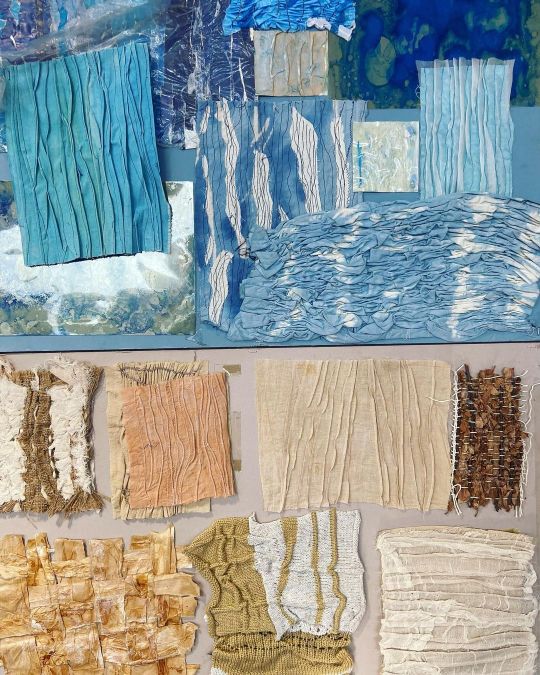
Experiments with different ways to manipulate fabric to create new textures for designs. #fashion #fashiondesign #textiles #textilesdesign #texture #fabricmanipulation #fabric (at Clarendon Sixth Form College) https://www.instagram.com/p/CUNEwWGKybT/?utm_medium=tumblr
3 notes
·
View notes
Text


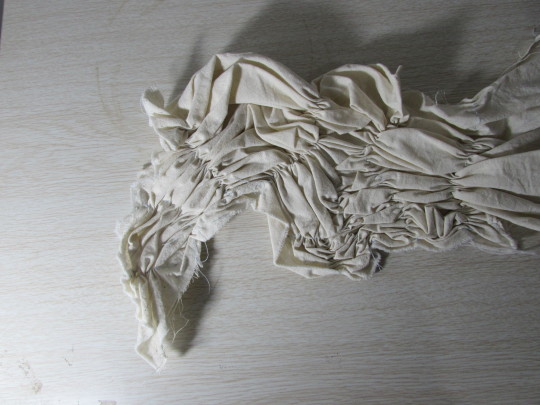
Técnicas experimentais de manipulação têxtil.
1 note
·
View note
Photo
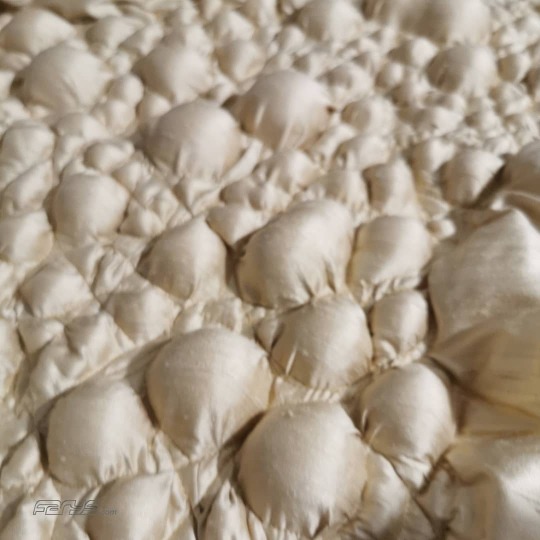
#structure #freihandsticken #freihandstickenmitnähmaschine #surface #surfacedesign #textilestructure #textiledesign #embroidery #sewingmachine #3dmanipulation #3dfashion #fabricmanipulation #silk #silkdress #3dcouture #nudecolor #dupionsilk (hier: Cologne Germany) https://www.instagram.com/p/CPgurphnOat/?utm_medium=tumblr
#structure#freihandsticken#freihandstickenmitnähmaschine#surface#surfacedesign#textilestructure#textiledesign#embroidery#sewingmachine#3dmanipulation#3dfashion#fabricmanipulation#silk#silkdress#3dcouture#nudecolor#dupionsilk
3 notes
·
View notes